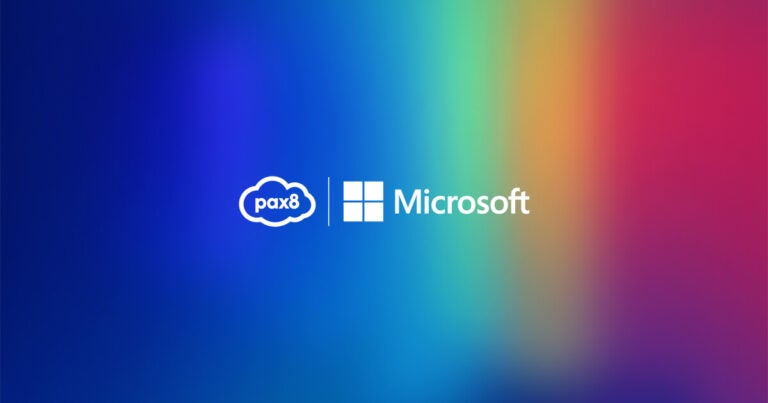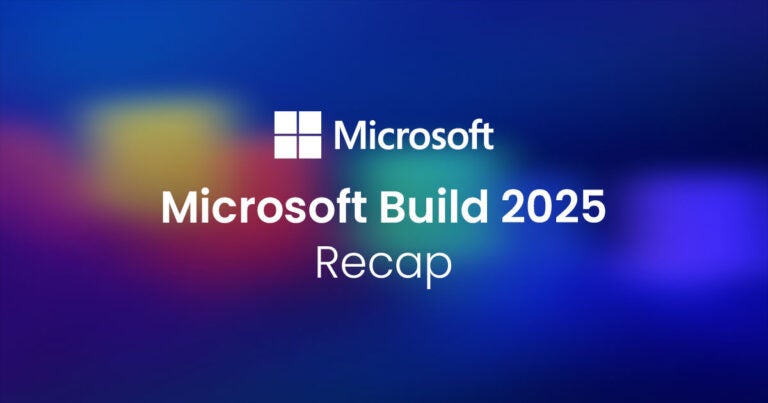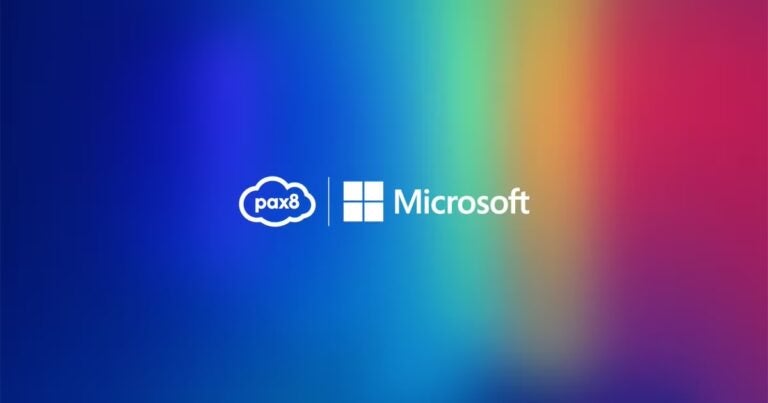Get answers to these common questions about WVD for Azure.a
Windows Virtual Desktop (WVD) is a very powerful solution for businesses looking to modernize and optimize their IT spending and operations for remote desktops. Our Azure experts have gotten a lot of questions about WVD and we wanted to take them time to answer a few of them to help everyone get a bit more familiar with it.
Term Glossary
Before we get started, here’s a short glossary of some terms that we’ll be using:
Virtualization: Technology that enables other programs to emulate hardware in order to run other operating systems in their own respective containers.
Remote Desktop Services (RDS): The platform of choice for building desktop virtualization solutions for every end client need, including delivering individual virtualized applications, providing secure mobile and remote desktop access, and providing end users the ability to run their applications and desktops from the cloud.
Virtual Machine (VM): The software emulation of a computer system, created within a real or physical computer, allowing you to create multiple separate “computers” that can run different operating systems and programs.
Non-persistent environments: When users access a non-persistent environment, none of their settings or data is saved once they log out. At the end of a session, the desktop reverts to its original state and the user receives a fresh image the next time he logs in.
Office 365 Container: Designed to improve the performance of Microsoft Office in non-persistent environments, Office containers redirect only the local user files for Microsoft Office.
Virtual Hard Disk (VHD): A file that can use a “.vhd” extension and acts like a physical hard drive, but with the difference that this is a file stored on a real disk.
FSLogix: A set of solutions that enhance, enable, and simplify non-persistent Windows computing environments by containerizing user profiles.
Host Pools: A collection of one or more identical VMs within WVD environments. Each host pool can contain an app group that users can interact with as they would on a physical desktop.
Golden Image: The golden desktop image is a VM template. You can create new desktops as exact copies of the golden image, allowing you to stamp out standardized desktops very easily.
Azure Hybrid Benefit: A licensing benefit that helps you to significantly reduce the costs of running your workloads in the cloud.
Azure Reserved Instances: Significantly reduce costs – up to 72% compared to pay-as-you-go prices – with one-year or three-year terms on Windows and Linux virtual machines (VMs).
1. What is WVD?
WVD is a set of technologies from Microsoft Azure that enables IT professionals to create Windows 10 virtual desktops in Azure. WVD was launched in 2019 and is the evolution of Microsoft’s Remote Desktop Services (RDS) technology. As businesses look to continue modernizing their cloud for the 21st century, and beyond, desktop virtualization will be vital to their success.
Benefits of virtualization
Virtualization can increase IT agility, flexibility, and scalability while creating significant cost savings. Greater workload mobility, increased performance and availability of resources, and automated operations — they’re all benefits of virtualization that make IT simpler to manage and less costly to own and operate.
- Additional benefits include:
- Minimized or eliminated downtime
- Increased IT productivity, efficiency, and responsiveness
- Faster provisioning of applications and resources
- Greater business continuity and disaster recovery
- Simplified data center management
2. How does it work?
Today, many companies use virtual desktop infrastructure to manage a collection of Windows VMs running in their data centers, and then allow users to access those VMs from their own devices.
Windows Virtual Desktop is a cloud-based service that uses this virtualization technology. Because it runs with unlimited cloud resources, WVD makes it easier for IT organizations to deploy, manage, and scale the number of Windows VMs available to their users.
Imagine if you could have a laptop that performed like it did when it was brand new – and it was impossible for you to lose it. WVD does that for you by providing a Windows VM and apps in the cloud that you can access from your Windows, macOS, iOS/iPadOS, or Android device.
What you can do with WVD
You can do so much with Windows Virtual Desktop that this list could be a mile long, but here are the handful we think are the most important for you to know about.
Deliver the only multi-session Windows 10 experience.
Provide your users with the only multi-session Windows 10 experience virtualized in the cloud –that’s highly scalable, always up to date, and available on any device.
- Multi-session and single-session Windows 10
- Store and legacy app remoting
- Free Windows 7 Extended Security Updates
Enable optimizations for Microsoft 365 Apps for enterprise.
Deliver the best Microsoft 365 Apps for enterprise (formerly Office 365 ProPlus) experience with multi-session virtual scenarios to provide the most productive virtualized experience to your users.
- Office 365 containers make Office perform better in a multi-session environment, including Outlook and OneDrive for Business
- Profile containers enable faster performance in non-persistent environments
Migrate existing Windows Server (RDS) desktops and apps.
Migrate your Remote Desktop Services (RDS) environment or Windows Server desktops and apps with a simplified infrastructure management and deployment experience on Azure.
- Support for Windows Server 2012 and Remote Desktop Services 2012R2 and newer
- App compatibility for existing Windows Server images used on-premises
Securely deploy and scale in minutes.
Quickly virtualize and deploy modern and legacy desktop app experiences in minutes with unified management in the Azure portal.
- Azure has data centers available in 54 regions, and 140 countries
- Azure management portal for Windows Virtual Desktop
- Built-in security and compliance (Windows & Azure) with assistance from Microsoft’s cyber defense operations
Licenses with access to WVD
You are eligible to access Windows 10 and Windows 7 with Windows Virtual Desktop if you have one of the following licenses:
- Microsoft 365 E3/A3
- Microsoft 365 E5/A5
- Microsoft 365 F1
- Microsoft 365 Business
- Windows 10 Enterprise E3/E5
- Windows 10 Education A3/A5
- Windows 10 VDA per user
3. Why should businesses use WVD?
For businesses looking to shift to a more virtualized environment, WVD is really the only way to go if they want to truly optimize their desktop experience and leverage the power of a modern cloud. Here are some of the key WVD benefits that Pax8 partners have identified.
Expand capabilities with the best virtualized end user experience.
- Connect to any platform with an experience just like native.
- Enhance protocol by adapting bandwidth utilization.
- Enable fast Virtual Hard Disk (VHD) load times and log-on times with containerized user profiles.
- Drive stronger collaboration with Teams enhancements.
Realize more efficient and simplified management.
- Unify both Desktop and Remote App experiences for easy-to-grasp learning.
- Engage flexible user experiences through multiple apps.
- Utilize automated VM deployment.
- Solve errors quickly with simplified but powerful troubleshooting with advanced diagnostics.
Ensure security and modernization with a standardized, global cloud.
- Reach anyone, anywhere with 54 regions (more than any other cloud provider).
- Rely on powerful cyber defense operations with over 3,500 full-time security professionals.
- Assign role-based access control to admins.
Significantly reduce costs without compromising quality.
- Decrease spending to only virtual machines, storage, and networking consumed while using the service.
- Employ the full Windows 10 experience at multi-session costs.
- Absorb the licenses you already own to limit spending.
4. Who needs WVD?
We’ve covered a lot already in terms of functions and benefits, but there’s probably one big question still on your mind — “How do I know what clients could benefit from WVD?” Don’t worry, we’ve got you covered there too. While we’d like to simply say that every business and situation can be a good fit for WVD, and virtualization in general, there are definitely some that stand out as best fits:
Security and regulated industries like financial services, healthcare, and government.
Flexible workforces such as those from mergers and acquisitions, short-term employees, and contractor and partner access.
Specific employees like call center workers, branch workers, and BYOD (bring your own device) and mobile employees.
Specialized workloads such as design and engineering, legacy apps, and software dev test.
By no means is the above a comprehensive list of targetable scenarios, but you should now have an idea of the types of things to be looking for when trying to identify your next WVD opportunity.
5. Where can I get started?
Are you ready to get started with Windows Virtual Desktop for Azure? Pax8 works with industry leader Nerdio to help partners easily estimate costs and automate, manage, and optimize WVD deployments. Coupling the power of AI and Infrastructure as a Service (IaaS) from Azure with WVD from Nerdio – a Microsoft preferred solution – enables you to deploy, manage, and optimize your clients’ cloud environments without leaving the couch.
If you want to dig a bit deeper into this opportunity, you can watch our WVD webinar on-demand, or go even further down the rabbit hole by reading this Windows Virtual Desktop technical deployment walkthrough. And as always, please schedule a call with our team of WVD experts who can help answer any of your questions.





